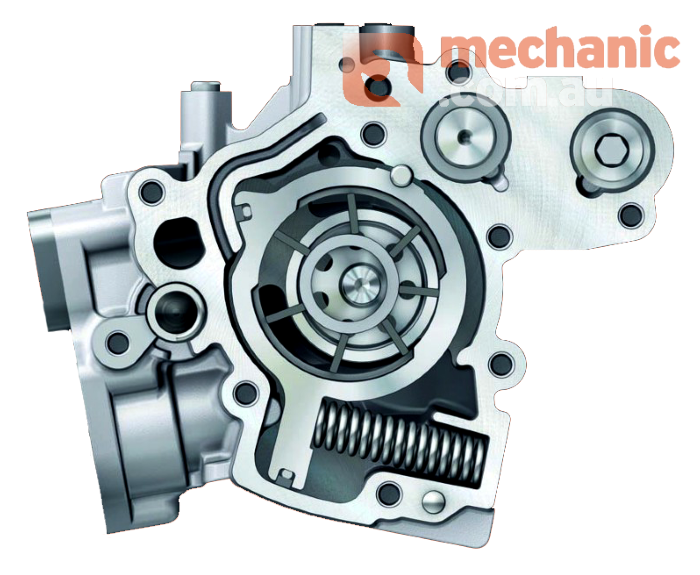A: Leaves the oil to drain for as long as possible.
Then we jack up the car from one corner to get every last drip out of the sump. Well, maybe not, but don't pretend you haven't done this at least once before!
Well, if that vehicle happens to be a 2011-2016 Ford Ranger or Mazda BT-50 with a 3.2L Diesel Engine you may have just destroyed an engine.
These engines run a variable displacement vane type oil pump.
Leaving the oil to drain for longer than 10 minutes can cause the oil pump to cavitate, causing oil starvation and catastrophic engine damage.

Why does this happen?
To acheive a variable displacement of oil, the engine utilises a vane type pump, similar to those used in old A/C compressors or power steering pumps.
This pump is chain driven and as the engine load increases, more oil is displaced by moving the outer pump ring.
This style of oil pump is now fairly common in modern engines, so why does this problem only seem to affect the 3.2L Duratorq engine?
It appears that the relationship between the position of the oil pump and filter along with the design of the oil galleries are a collective recipe for this issue. When the oil drains from the oil pump during an oil change, the vanes fail to form a 'seal'.
How do I prevent this from happening?
Simply make sure you complete the oil change in under 10 minutes (as directed by Mazda)
That means drain the main volume of engine oil, then renew the filter, add new oil and start up in under 10 minutes.
Always pay particular attention to the oil pressure light when starting these engines after an oil change.
What do I do if this has happened?
If the oil pressure light does not extinguish upon starting after an extended oil drain period, DO NOT attempt to rev the engine to build oil pressure.
When these pumps become devoid of oil they will not self prime. Attempts to re-prime these oil systems manually by means of using air pressure, cold cranking and use of vacuum generally fail to yeild any results.
Remember, Prevention is always better than cure!